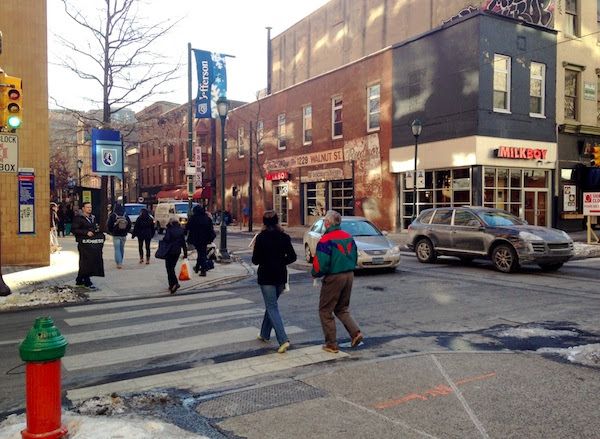Introduction
Philadelphia, a bustling metropolis known for its rich history and vibrant culture, faces a significant challenge regarding road safety. Among its many streets, one is particularly hazardous—the most dangerous street in Philadelphia. This article will explore what makes this street so hazardous and what is being done to mitigate the risks. We’ll also provide practical tips for staying safe and highlight the role of community involvement in making our streets safer. Whether you are a driver, pedestrian, or cyclist, understanding these aspects can help you navigate this dangerous area more safely.
Why This Street is Dangerous
Understanding why a particular street is labeled as the most dangerous can help us comprehend the complexities of urban road safety. The most dangerous street in Philadelphia has garnered this dubious honor due to high traffic volume, poor infrastructure, and frequent violations of traffic laws. These factors create a perfect storm for accidents, making it a hotspot for collisions and pedestrian injuries. High traffic volume means the street is continuously busy, increasing the chances of interactions between vehicles and pedestrians. Poor infrastructure exacerbates this by providing limited safety features, such as inadequate pedestrian crossings and street lighting. Frequent traffic violations, including Speeding and running red lights, further elevate the risk, creating an environment where accidents are almost inevitable.
Key Factors Contributing to Hazards
Several elements contribute to the hazardous nature of this street. High traffic volume is a primary factor, with thousands of vehicles navigating the area daily. This congestion often leads to aggressive driving behaviors as drivers become impatient. Inadequate infrastructure, such as poorly marked crosswalks, lack of pedestrian signals, and insufficient lighting, exacerbates the risks. For example, intersections without proper signage can confuse drivers and pedestrians, leading to accidents.
Moreover, driver behavior significantly impacts safety. Speeding, distracted driving, and a general disregard for traffic laws contribute to the high accident rate. Distracted driving, whether due to mobile phone use or other distractions within the vehicle, is hazardous as it reduces reaction times. These combined elements make this Philadelphia street a danger zone for motorists and pedestrians alike.
Current Safety Measures
Despite its reputation, various safety measures have been implemented to improve Philadelphia’s most dangerous street conditions. The bitlles game city has installed traffic cameras to monitor and enforce speed limits and red-light compliance. These cameras serve as a deterrent for reckless driving, and help identify violators who might go unnoticed. Raised medians and better lighting have been added to reduce pedestrian fatalities. Raised medians provide a safe refuge for pedestrians crossing the street, while improved lighting ensures better visibility for drivers and pedestrians, especially during nighttime.
Moreover, law enforcement agencies have increased their presence to deter reckless driving. Regular police patrols are a visible reminder for drivers to adhere to traffic laws. While these measures have shown some positive impact, ongoing efforts are crucial to making a lasting difference. These measures must be continuously assessed and adapted to address evolving challenges effectively.
Tips for Staying Safe
For Motorists
- Adhere to speed limits and traffic signs to ensure you’re driving safely and predictably.
- Avoid distractions like mobile phones while driving, focusing entirely on the road.
- Be particularly cautious in high-traffic zones and near pedestrian crossings, reducing speed as necessary.
For Pedestrians
- Always use designated crosswalks and pedestrian signals, ensuring you cross the street legally and safely.
- Stay alert and avoid walking with earphones in high-traffic areas to remain aware of your surroundings.
- Wear bright or reflective clothing during nighttime for better visibility, making it easier for drivers to see you.
For Cyclists
- Use designated bike lanes wherever available to stay separated from motorized traffic.
- Wear helmets and other protective gear to safeguard yourself in an accident.
- Install front and rear lights on your bicycle for added safety, ensuring you’re visible to motorists and pedestrians.
Community Involvement and Initiatives
Community involvement is essential in transforming the most dangerous street in Philadelphia into a safer place. Residents and local organizations have initiated various programs to raise awareness and advocate for better infrastructure. These include neighborhood watch groups, safety workshops, and petitions for more crosswalks and traffic signals. Such grassroots efforts are crucial as they represent the concerns and needs of those who use the street daily. Collaborative efforts between the community and local government have effectively made meaningful changes. For example, community-driven audits can identify specific hazards that might not be evident from a top-down perspective. Additionally, local businesses can join these initiatives by promoting safety measures and contributing to infrastructure upgrades. The involvement of schools in safety education programs can also instill good habits in younger residents, ensuring long-term improvements in road safety.
Conclusion
Improving the safety of the most dangerous street in Philadelphia is a multifaceted endeavor requiring concerted efforts from city officials, law enforcement, and the community. While significant strides have been made, continuous evaluation and adaptation of safety measures are essential for long-term improvements. By understanding the contributing factors and taking proactive steps, we can collectively work towards making our streets safer for everyone. Every action counts in transforming hazardous roads into secure environments, from better infrastructure to robust community involvement. The ultimate goal is to create a city where road safety is a given, not a concern, and everyone can navigate the streets confidently and securely.

